Masterpieces in miniature: Where art and elegance meets the precision of timekeeping
Rare metiers d’art timepieces are more than mere conversation starters. They are a joy to behold and the craftspeople at the top are as sought after as the highest-paid rock stars, explains Nicholas Foulkes.
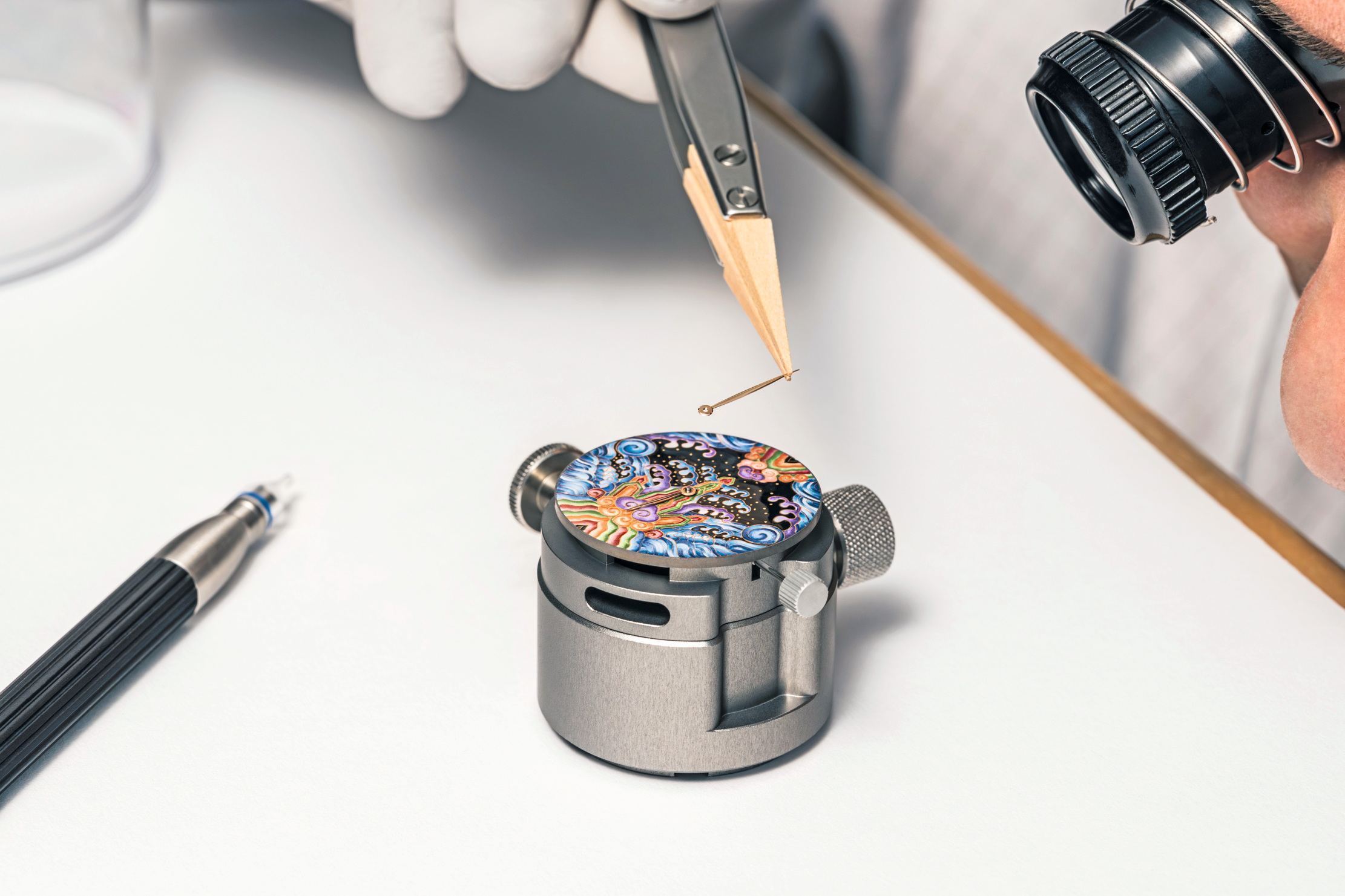

I was recently speaking to a friend who seemed in unusually high spirits. I asked what accounted for his good humour. He replied that he had won the lottery — cause, indeed, for celebration. ‘Which lottery?’ I asked. ‘The Patek Philippe lottery,’ came the surprising reply. My friend explained that the ‘lottery’ to which he referred was the allocation of timepieces from Patek Philippe’s annual ‘Rare Handcrafts’ exhibition. He had been lucky enough to be offered the chance to buy a Golden Ellipse with a hand-painted dial, inspired by an old postcard depicting the Pont des Bergues. Living in Switzerland, he says, he must have crossed that bridge thousands of times and the idea that some artist had laboured for months crouched over the 28.7mm x 33.6mm ‘canvas’ of the watch dial gave him real pleasure.
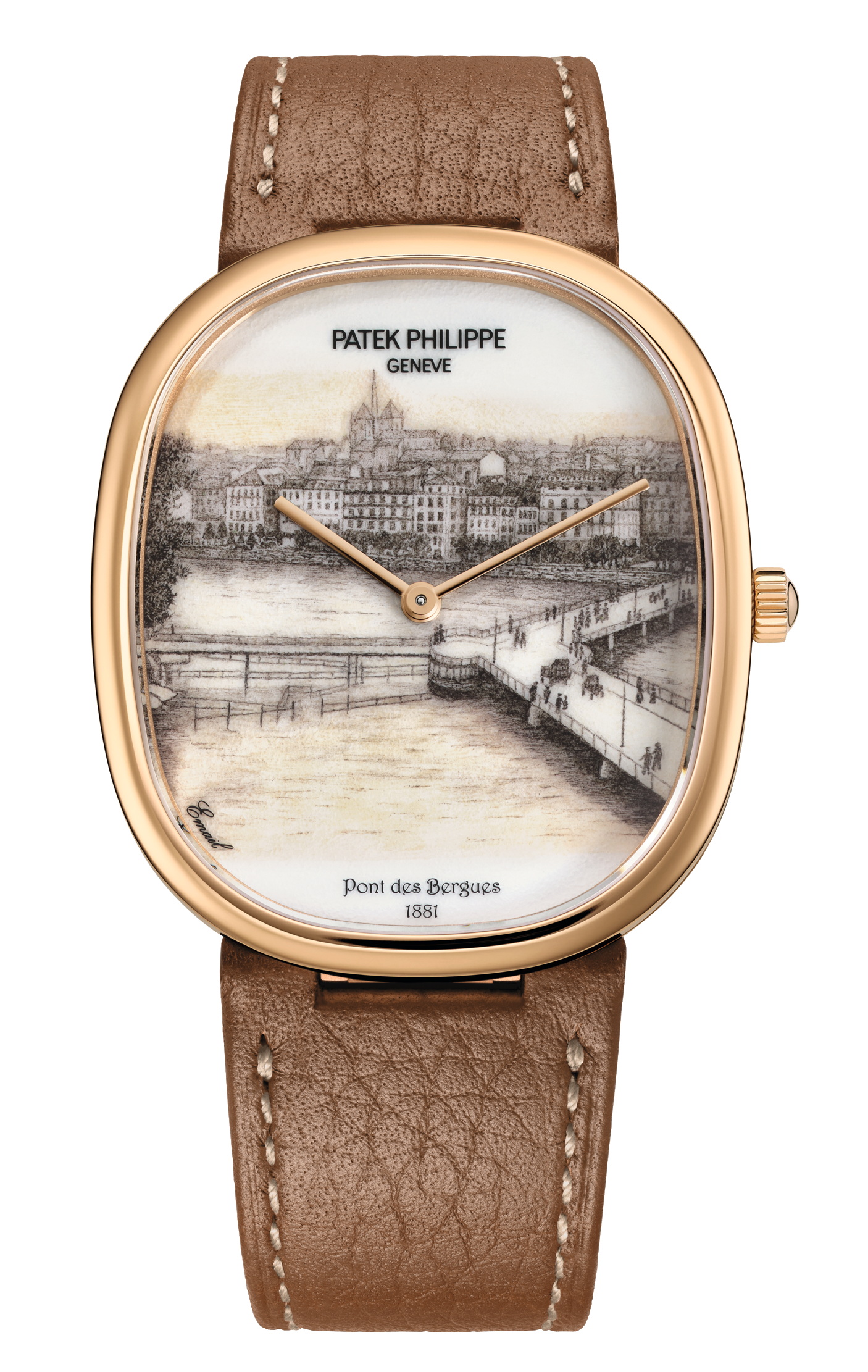
As well as being a connoisseur, my friend is in the fortunate position of being able to acquire any watch he wants. He is not blasé and it takes a lot to pique his interest, but this watch is truly remarkable. Imagine Canaletto with his eye for detail and think of him depicting the bridge, the lake and the old town of Geneva, dominated by the familiar silhouette of the towers of St Peter’s Cathedral, then shrink it to the size of a large postage stamp. It is that good — so good, in fact, that you need a magnifying glass to appreciate it fully. The picture was painstakingly built up over months using four enamel colours: white, black, mid brown and yellow ochre. During that time, it paid 15 visits to the kiln, with firings at a descending range of temperatures from 840˚C–780˚C. It is an example of the applied arts in the most literal sense. The skills are not merely those of an artist, there is a requirement for profound technical knowledge as different coloured enamels are fired at different temperatures. A deviation of a few degrees in a firing and the piece will have to be abandoned.
As you can tell, I share my friend’s enthusiasm for this kind of work and I could write pages about this one watch. The truly remarkable thing is that this was only one out of 83 clocks, wrist watches and pocket watches depicting subjects as varied as surfers, flowers, the birds of the Orient and the railway trains that plied routes along the eastern seaboard of America and Canada in the first half of the 20th century. In other words, something for everyone. The techniques employed were equally as varied: numerous methods of gem-setting, enamelling techniques, miniature marquetry (think of a jigsaw puzzle of 300 or 400 microscopic pieces, some little bigger than motes of dust), guilloché work, hand engraving and more.
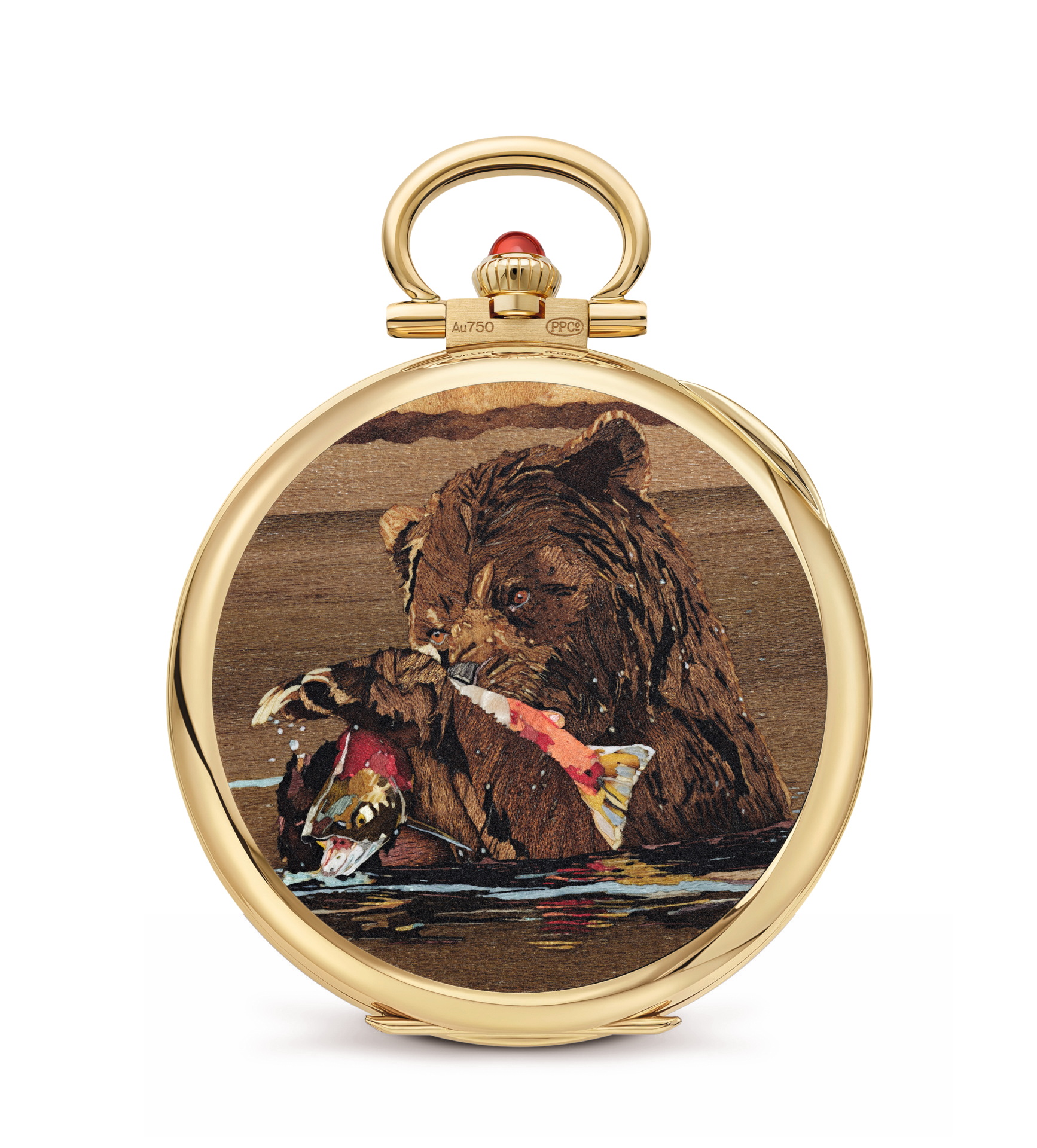
Spread those across more than 80 timepieces of different types and sizes, then start putting them together in different combinations, as many as five crafts on a single piece, and you begin to get an idea of the scale of this exhibition. This was not merely a case of making one or two fancy watches to exhibit at a trade fair or creating a spectacular watch for a spectacularly wealthy client; the range, quality, variety and quantity of pieces was staggering. Each a work of art in its own right and, like all great art exhibitions, this year’s show went on tour and spent a few glorious weeks in London this summer.
Even competitors will privately acknowledge that, during the dark days of the 1970s and 1980s, when the future of personal timepieces seemed to be electronic and famous brands went to the wall or changed hands many times, Patek Philippe protected decorative techniques and the artist-craftsmen who practised them until such time as there came a public capable of appreciating them. That time is now.
For many years after the rebirth of interest in mechanical watchmaking during the 1990s and early 2000s, horological virtuosity was signalled and conferred by mechanical exigence. This was the day of the grand complication, watches that piled function upon function: chronograph, flyback chronograph, split seconds chronograph, moon phase, perpetual calendar, world time, sidereal time, minute repeater, time of sunrise and sunset, depiction of the night sky at a given location, prediction of the date of Easter (a personal favourite) and much more besides.
Nowadays, however, it is not enough that your watch is accurate to marine chronometer standards, functions as a stopwatch and provides the time of day in Noumea. It must be beautiful, too. Over the past 15 or so years, métiers d’art, as these techniques are known, have grown in cultural significance.
Sign up for the Country Life Newsletter
Exquisite houses, the beauty of Nature, and how to get the most from your life, straight to your inbox.
Unsurprisingly, jewellery houses that made watches were among the pioneers and one of the earliest adopters was the Place Vendôme jewellery maison of Van Cleef & Arpels. The house has been helmed for many years by Nicolas Bos, who was quick to realise the new fields of expression that métiers d’art opened up. Under Mr Bos’s guidance, Van Cleef has produced a remarkable range of timepieces that showcase these artistic crafts. Some are dainty wafers of mechanical poetry on the wrist, such as the Heures Florales inspired by 18th-century scientist Carl Linnaeus’s flower clock. The dial comprises 12 flowers crafted using a mixture of mother-of-pearl marquetry, miniature painting, gold sculpting and, of course, gem setting. When activated by the wearer, the flowers bloom to tell the time: if three flowers open, it is three o’clock. Then there are those such as the unique Fontaine aux Oiseaux: an automaton clock that brought together the skills of 20 different workshops, it is a tour de force, one of the true horological highpoints of our times.
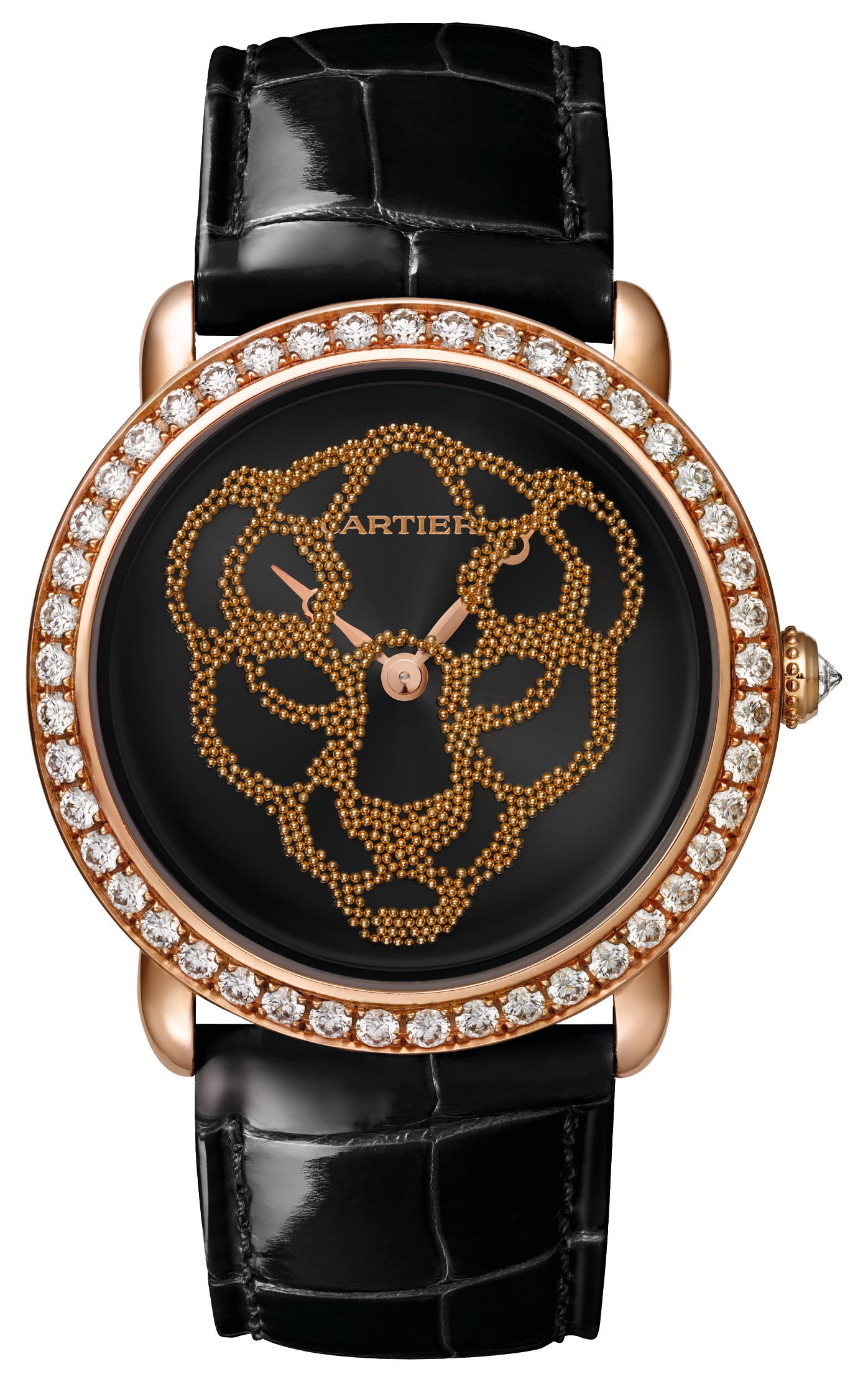
I clearly wasn’t alone in my opinion of Mr Bos. He did such a good job with Van Cleef & Arpels that he was promoted to run the whole Richemont Group, including Cartier, which this year celebrates the 10th anniversary of its Maison des Métiers d’Art, part traditional, 17th-century Bernese farmhouse, part 21st-century, state-of-the-art atelier. It is a metaphor for the work it does, mastering time-honoured, centuries-old techniques and devising new ones. The list of métiers apparently tops 120 techniques that have yielded some quite remarkable timepieces: for instance, Révélation d’une Panthère, a watch on which a panther’s head appears and disappears with the movements of the wrist, and the Crash Tigrée, a version of the famous ‘Dalí’ watch enriched with enamelling engraving and gem-setting techniques that embellish both dial and bezel.
Such contemporary use of classic techniques is also evident in the recent output of Piaget — under the dynamic leadership of Benjamin Comar, the Geneva-based company is enjoying a renaissance. Creative director Stephanie Sivrière talks excitedly of one particular piece, a half-skeletonised tourbillon in varying shades of blue running from light to dark with a degrade effect that mixes gem setting and cloisonné enamel: ‘I decided to hide half of the skeleton with enamel and have a degrade of stones towards the cloisonné enamel. It’s more than a skeleton, it is a work of art.’ Ms Sivrière does not restrict herself to classic techniques. She will consider all sorts of materials to achieve the desired depth or range of colour: I knew of straw, leather and feather marquetry, but I was embarrassingly ignorant of the fact that beetle wings could also be used.
If you like your artistic effects more historic, you are probably already aware of the collaboration between venerable Vacheron Constantin (founded 1755) and comparative newcomer the Louvre museum (founded 1793) to create timepieces depicting some of the greatest artworks of antiquity — including the Lion of Darius, the Sphinx of Tanis and the winged victory of Samothrace — bringing them to three-dimensional life with a broad variety of métiers d’art.
Indeed, museums and métiers are a popular pairing at Vacheron. This August, the brand launched a collection of watches called A Tribute to Traditional Symbols. Inspired by China’s imperial past, it was developed with the guidance of the former associate research librarian of the Forbidden City. Long established as it may be, Vacheron is not afraid to embrace new ways of using old crafts, as Christian Selmoni, the brand’s style and heritage director, explains. Guilloché (engine turning) is one of the most classic decorative techniques, accomplished using a hand-operated machine that looks as if it was invented by Jules Verne and is little changed in two centuries. In skilled hands, it can engrave geometrical patterns of immense complexity on a watch dial. If you are really showing off, a dial may contain many different contrasting patterns of guilloché. Naturally, Vacheron knows its way around a guilloché machine, but even Mr Selmoni was astonished to find what else could be done with the technique.
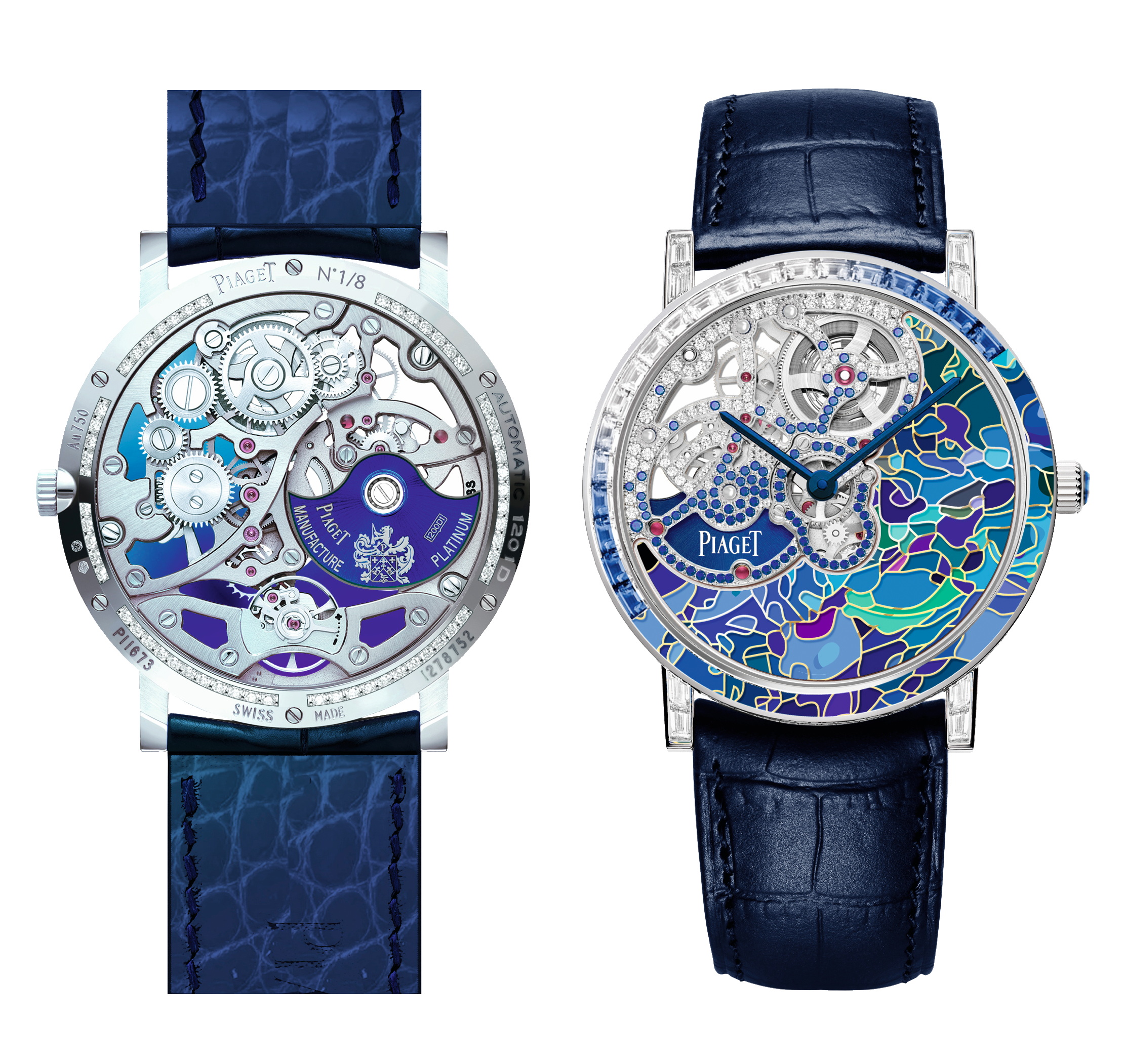
‘We have this fantastic guillocheur from Thailand. One day, we challenged him to express his work in a different way and get out of the traditional patterns. It was almost meant as a joke,’ elaborates Mr Selmoni — but it was a joke that was taken seriously. ‘He created a map of the world and we realised that we had someone phenomenal here. This is how we started figurative guilloché at Vacheron Constantin and, since then, he has created unbelievable things. I think this is something unique. He is very gifted. If he were Japanese, he would be a Living National Treasure.’
Japan’s Living National Treasures are individuals whose transcendent mastery of traditional Japanese skills is officially recognised and supported by the state. One of these guardians of Japan’s intangible cultural riches, Kiichiro Masumura, a master in the technique of Urushi lacquer, has long enjoyed a very productive creative partnership with Chopard, which uses Urushi dials on its elite LUC watches. Each dial takes between a week and a fortnight to complete, says Chopard co-president Karl Friedrich Scheufele, who describes the pilgrimage he once made to the master’s studio: ‘Once you have witnessed the technique, seen the brushes of one hair from a special type of mouse or rat, you cannot help but be impressed.’ He has recently completed a series of dials relating to the Chinese Zodiac. Even a Living National Treasure has their limits, however. ‘We asked him to make a dial for the Indian market depicting the deity Ganesh,’ recalls Mr Scheufele. ‘It took him two months and he implored us never to ask him to do another.’
Chopard was quick to realise the value of naming the artists with whom it works, rather than keeping them hidden, as once was the case. Today, a watch with an enamel dial signed by star enameller Anita Porchet is a highly valued trophy timepiece. Certainly, brands are more inclined to bruit about their associations with craftsmen than they were 15 years ago. ‘We are very transparent with the artisans,’ says Jean Arnault, youngest scion of the LVMH dynasty who has injected new life into the watches made by Louis Vuitton. ‘Clients know exactly what’s being done outside and what is in house and, if created in house, every artisan signs their dials.’
The best craftsmen are like celebrated actors or highly sought-after footballers. One recent example of this artisanal star power came from Louis Vuitton, which paired celebrity engraver Dicik Steenman with enamel queen Ms Porchet. ‘Combining different techniques creates a little collaboration between the artisans, which is quite hard to manage to be honest,’ admits Mr Arnault, ‘but creates something quite extraordinary at that size.’ At 26 years old, he is an example of another characteristic of métiers d’art — the youth of its practitioners. Such is the demand for these pieces that Van Cleef & Arpels runs a three-year course in enamelling, at the end of which students receive an officially recognised diploma.
‘You have kids of 18, 19 or 20, who are very, very motivated now to join this type of activity, which, honestly, was difficult to find 15 years ago,’ reflects Richemont’s Mr Bos. ‘You have to work on all the different levels. You have to make sure that you revive the schools and make these activities attractive, so that you can train and bring new craftsmen.’ He adds: ‘We don’t just want to preserve craftsmanship as a beautiful thing from the past that we want to put under a glass, we want craftsmanship to be alive, active and for it to progress. You also have to revive the visibility of craftsmanship so that it enjoys better understanding and appreciation’. The world of métiers d’art is one in which there is plenty to appreciate.
Nicholas Foulkes is an author, journalist and editor.

Bentley tells us the future and announces fully electric car for 2026
The Crewe-based luxury car maker also reveals plans to go fully electric by 2035.
Country Life is unlike any other magazine: the only glossy weekly on the newsstand and the only magazine that has been guest-edited by HRH The King not once, but twice. It is a celebration of modern rural life and all its diverse joys and pleasures — that was first published in Queen Victoria's Diamond Jubilee year. Our eclectic mixture of witty and informative content — from the most up-to-date property news and commentary and a coveted glimpse inside some of the UK's best houses and gardens, to gardening, the arts and interior design, written by experts in their field — still cannot be found in print or online, anywhere else.
-
 'Monolithic, multi-layered and quite, quite magnificent. This was love at first bite': Tom Parker Bowles on his lifelong love affair with lasagne
'Monolithic, multi-layered and quite, quite magnificent. This was love at first bite': Tom Parker Bowles on his lifelong love affair with lasagneAn upwardly mobile spaghetti Bolognese, lasagne al forno, with oozing béchamel and layered meaty magnificence, is a bona fide comfort classic, declares Tom Parker Bowles.
By Tom Parker Bowles
-
 Country houses, cream teas and Baywatch: Country Life Quiz of the Day, April 24, 2025
Country houses, cream teas and Baywatch: Country Life Quiz of the Day, April 24, 2025Thursday's Quiz of the Day asks exactly how popular Baywatch became.
By Toby Keel